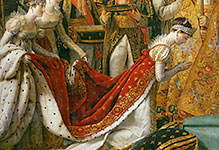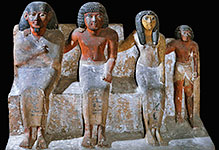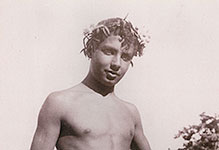
Society
Personalities, Aristocracy, Politics and Portraits, Rulers, Emperors and Kings, Crowds and Demonstrations.

#03050623
Alexander the Great (336-323 BCE), statue; 4th century BCE.

#03050627
Marble sculpture of horse and headless horseman, possibly young Alexander the Gr...

#03050628
Limestone relief of the Battle of Issos (also known as Battle of Issus), 5 Novem...

#03050631
Marble statue of a kouros; 540 BCE.

#03050714
Hellenistic cameo in agate. Aexander wears horns, denoting the Egyptian God Amu...

#030601 2
Bimaran Reliquary, from stupa 2 at Bimaran, Gandhara (Afghanistan). The inscrip...

#030601 4
Dark grey schist head from a statue of the Buddha, 2nd CE Gandhara, India. This...

#030601 7
Schist head of the fasting Buddha, Pakistan, 2nd-3rd CE. It captures the time w...

#030601 9
Limestone panel depicting the Buddhapada, from the Great Stupa at Amaravati, 1st...

#03060111
Carving of the Great Stupa on a limestone slab, 3rd CE. An image of the Buddha s...

#03060113
Grey schist relief panel depicting the maha-pari-nirvana, the Buddha's physical...

#03060114
The war-god Skanda, eastern India, 8th09th CE. Skanda is alwyas depicted as a yo...





